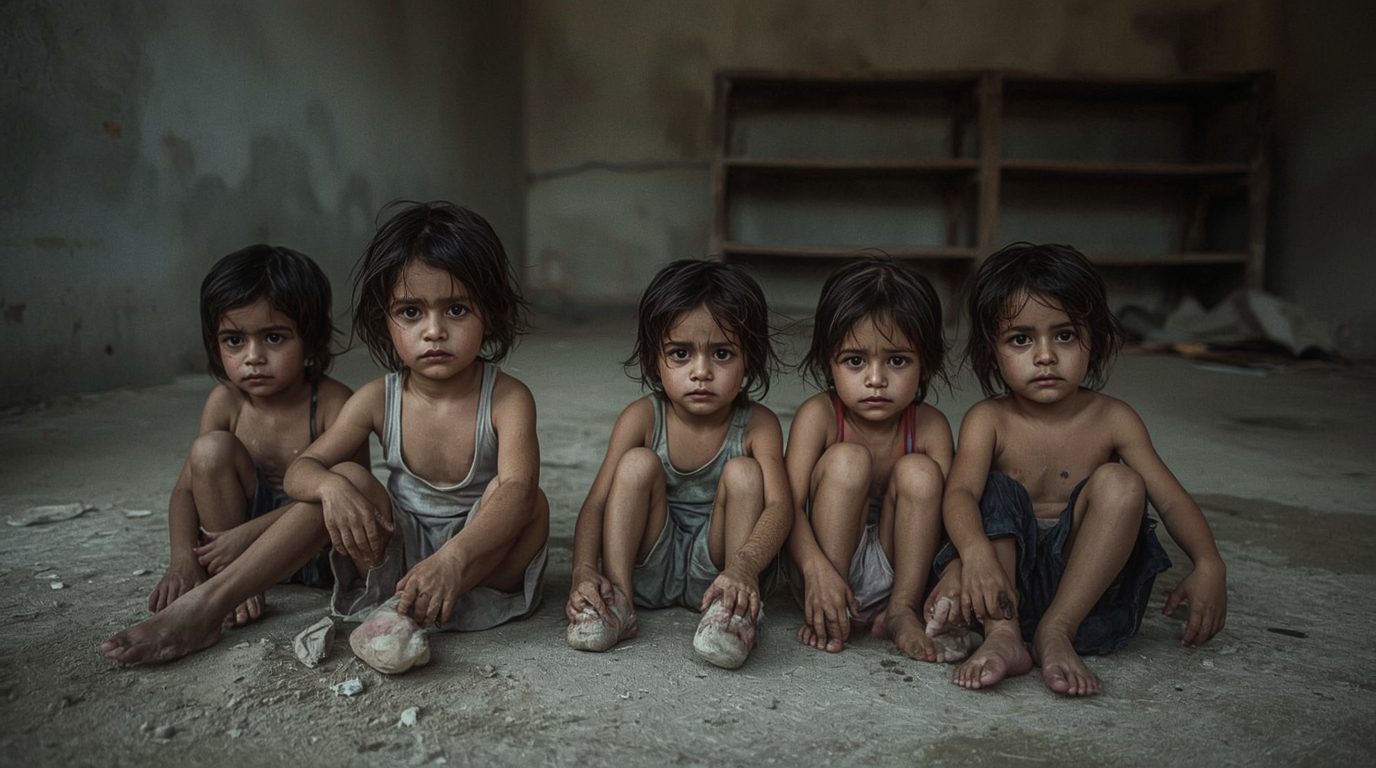Gaza City Faces Famine
GAZA CITY, Gaza Strip — Gaza City is now teetering on the edge of a widespread famine, and experts fear the disaster could engulf the entire Strip unless fighting stops and lifesaving aid is allowed in. The Integrated Food Security Phase Classification (IPC) announced that, for the first time in the region, it has classified famine conditions in the Middle East.
Gaza City, already home to several hundred thousand Palestinians, is at the center of the disaster. Surrounding zones—Deir al-Balah and Khan Younis—could fall into crisis by the end of next month without decisive intervention. Aid groups warn that hunger has been turbocharged by two decades of blockade and ongoing conflict.
Impact of Blockades and Conflict
From October 7, after Hamas carried out attacks on Israel, Israeli forces ramped up bombardment and imposed near-total restrictions on food, medicine, and diesel. Families are surviving on weeds and spoiled grains, while children face starvation. Over half a million Gazans—around 25% of the population—are now living at the brink of mass starvation.
Chris Newton, a hunger expert at the International Crisis Group, emphasized that starvation is being used as a tool in Israel’s strategy against Gaza, leading to preventable deaths, especially among children.
How Famine Is Determined
The IPC identifies famine based on three criteria:
- Over 20% of households cannot access enough food.
- Over 30% of children aged 6 months to 5 years are severely malnourished or wasted.
- At least two adults or four children under five die daily per 10,000 people due to starvation or related diseases.
Data collected between July 1 and August 15 already showed these signs in Gaza City. Experts suggest official declaration may have been delayed due to restricted data access.
The Human Toll
Doctors report rising malnutrition, particularly among children. Australian nurse Kirsty Blacka noted that patients appear younger than their age due to starvation. Contaminated drinking water worsens the situation, causing infections and diarrhea in malnourished patients.
Families, like that of Yousef Sbeteh, experience extreme weight loss among teenage children due to lack of protein, meat, and fish. The absence of adequate nutrition delays recovery and exacerbates the humanitarian crisis.
Historical and Regional Context
The Gaza Strip, home to over 2 million Palestinians, has faced chronic humanitarian crises since Hamas took control in 2007. Blockades by Israel and Egypt have led to poverty and food shortages. This is the first time the IPC has officially labeled a famine in the Middle East, similar to famines in Somalia, South Sudan, and Darfur in recent years.
Escalation Risks
Israel plans increased attacks in Gaza, raising fears that hunger will worsen. Aid groups stress that safe passage for food and temporary ceasefires are the only ways to prevent further starvation. Without action, southern Gaza could face even higher risks, and hospitals may collapse under strain.
International Response
The IPC report has drawn global attention. Aid and human rights groups urge Israel to allow unrestricted aid and halt military strikes affecting civilians. Geopolitical tensions complicate responses, with Israel prioritizing hostage rescues and U.S. support emphasizing civilian protection.
Humanitarian Obstacles
Even when supplies reach Gaza, checkpoints, security concerns, and logistical gaps prevent distribution. Long lines, looting, and difficulty reaching aid points make it nearly impossible for many residents, especially the weak and elderly, to access food. Blacka warned that evacuations before a new offensive could result in needless deaths.
Children at Highest Risk
Children are suffering most severely. Acute malnutrition damages growth, brain development, and immune function. Urgent delivery of therapeutic foods, vitamin-rich pastes, and protein supplements is critical to prevent rising child deaths.
The Moral Imperative
Gaza’s famine illustrates the human cost of conflict and blockades. Experts, including Alex de Waal, stress that famines are often man-made, and global intervention is necessary to save lives. Each day without aid worsens the suffering of families and the health of children.
For more continuous updates on this developing crisis, visit The Chrono Post.
Conclusion
Gaza City stands at the edge of famine. More than half a million people are struggling to survive without food. Without immediate delivery of essential aid, the disaster will expand across the Gaza Strip, leaving the world to witness one of the most urgent humanitarian crises of our time.

